Pallet Changing Machine: How to Streamline Recycled Carton Pallet Swaps?
Are you still swapping heavy loads from your durable in-house pallets to cheaper, recycled carton pallets by hand? This manual process is often slow, puts your team at risk of injury, and can easily damage your valuable products. Every minute your team spends wrestling with pallets is a minute they aren't focused on more productive tasks. This inefficiency slowly eats away at your bottom line, a problem that becomes more significant as your operation grows. A pallet changing machine is the solution. It automates the entire swap, offering a fast, secure, and efficient method that protects your products, your people, and your profits.
A pallet changing machine streamlines recycled carton pallet swaps by automating the transfer process. The machine securely grips the product load, often using adjustable side walls, and then either tilts or pushes the load smoothly. This allows the original pallet to be quickly removed and the new recycled carton pallet to be positioned underneath. The entire operation is completed in a couple of minutes with minimal manual labor, dramatically increasing efficiency and safety.
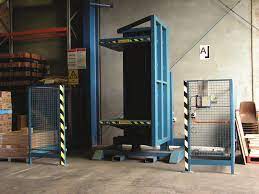
You see the basic concept, but I understand that as a practical leader, you have more questions. An investment in equipment needs to solve real-world problems. You're probably wondering if it can handle your specific products, especially if they are heavy or unusually shaped like steel coils or wire. You want to know about safety, reliability, and the real return on investment. I've spent my entire career in the packing machine industry, first as an engineer and now as a factory owner myself. I've seen what works and what doesn't. Let's dig deeper into these questions so you can see how this technology can be a powerful tool for your business.
How Does a Pallet Changer Handle Different Load Types and Weights?
You likely handle a wide range of products in your facility. Some are in neat, uniform boxes, while others might be in bags, drums, or even heavy, irregularly shaped industrial goods. A major concern before investing is whether a single machine can handle this variety. You worry that a machine designed for light boxes will fail with a heavy steel coil, or a machine built for heavy loads will damage fragile items. Investing in a machine that only works for a portion of your product line is a poor use of capital. Worse, using the wrong machine can lead to unstable loads, damaged goods, and serious safety risks, defeating the purpose of the investment. Modern pallet changers, however, are engineered for this exact challenge. They are not one-size-fits-all. Instead, they are designed with versatile mechanisms and can be adapted to handle a vast spectrum of loads, from lightweight cartons to multi-ton steel products.
A pallet changer handles diverse load types and weights by using specific, often adjustable, mechanisms. For heavy or stable loads, a machine with robust clamping side walls and a powerful pusher or inverter system is used. For lighter or more delicate goods, the clamping pressure can be adjusted, and a gentle tilting mechanism might be employed to slide the load using gravity instead of force. The key is matching the machine's design and features to your specific product requirements.
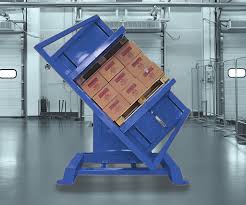
Dive Deeper: Matching the Machine to the Mission
When I first started as an engineer, the focus was often just on the machine's maximum capacity. But experience taught me that the how is just as important as the how much. The mechanism used to transfer the load is critical for success. It needs to match your product's characteristics and your operational needs.
Mechanism Matters: Choosing the Right Type
There isn't one perfect type of pallet changer for every job. The right choice depends entirely on what you're moving.
-
Pallet Inverters: These machines clamp the load and rotate it a full 180 degrees. The old pallet ends up on top and can be easily removed. This is a great solution for very stable, solid loads like stacks of paper, canned goods, or solid blocks. They are fast and effective. However, they are not suitable for loads that are layered or can shift, like loose bags or pails, as turning them upside down would create a mess.
-
Pallet Exchangers (Push-Pull): This style uses a pusher fence to slide the entire load from the source pallet to the destination pallet. It works well for stable, boxed products that can withstand some friction. It keeps the load upright, which is an advantage. The main consideration here is the stability of the product and the friction between the load and the pallet surface. It may not be ideal for very heavy loads that could resist the pushing force.
-
Tilter and Clamp Changers: This is often the most versatile solution. The machine clamps the load from the sides with adjustable pressure and then tilts it back slightly, usually between 95 and 120 degrees. This takes the weight off the pallet, allowing it to be swapped out. Because the load is securely held and only tilted, not inverted, it's safe for a huge range of products, including unstable ones. I remember a client in the steel wire business who had this exact problem. Their coils were heavy and tended to shift. A tilter with strong clamping walls was the perfect solution. It provided the strength to handle the weight and the stability to keep the coils secure during the transfer.
Critical Factors for Your Application
For a high-demand environment like a steel mill or a large distribution center, you need to look beyond the basic mechanism and consider the machine's construction and adaptability.
| Machine Type | Best For | Speed | Footprint | Suitability for Heavy Loads |
|---|---|---|---|---|
| Pallet Inverter | Solid, stable, uniform loads (e.g., paper, canned goods) | Fast | Moderate | Good, if load is compact |
| Push-Pull Exchanger | Sturdy, boxed loads that can slide easily | Very Fast | Large | Moderate |
| Tilter & Clamp | Almost any load type, including unstable or heavy | Moderate | Moderate | Excellent |
For someone like Javier, who runs a steel mill, the Tilter & Clamp model is almost always the right starting point. The machine must be built with a heavy-gauge steel frame and powerful hydraulics to handle the weight. But it also needs finesse. The clamping pressure must be adjustable to switch from handling a multi-ton steel coil to a pallet of more delicate finished parts without causing damage. True partnership with a supplier means we don't just sell you a machine; we discuss your entire product range to ensure the machine is specified correctly from day one.
What Are the Key Safety Features to Look for in a Pallet Changer?
Bringing any new piece of heavy equipment into your plant floor is a serious responsibility. A machine with enough power to lift and move tons of product is a potential hazard if it's not designed with safety as the top priority. You can't afford to take risks with your team's well-being. An accident not only causes human suffering but also leads to production shutdowns, investigations, and damage to your company's hard-earned reputation. The good news is that a well-designed pallet changer is an incredibly safe piece of equipment. The best manufacturers build machines with multiple, redundant layers of safety, from physical barriers to intelligent electronic sensors, all working together to protect your people and your products.
The most important safety features to look for in a pallet changer are a combination of physical and electronic systems. This includes full-height perimeter safety fencing with electrically interlocked access gates, light curtains at the entry and exit points to immediately stop the machine if the beam is broken, clearly marked emergency stop buttons, and hydraulic or electrical overload protection to prevent system failure under load.
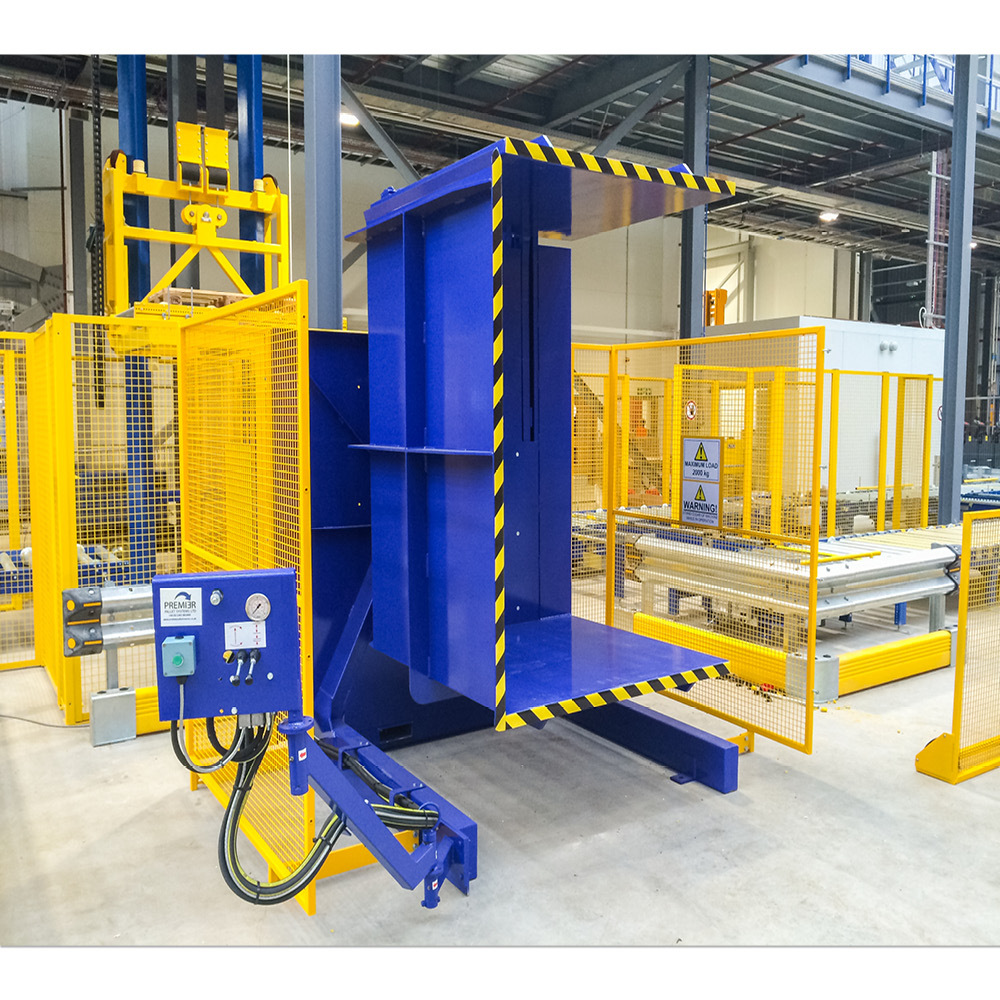
Dive Deeper: A Layered Approach to Safety
Safety isn't about a single feature; it's about a complete system where different components work together. In my years of designing and building these machines, I've learned to think of safety in two categories: passive systems that physically prevent access, and active systems that intelligently monitor the workspace.
Passive vs. Active Safety Systems
A safe machine needs both. One without the other is an incomplete solution.
-
Passive Safety: This is the first line of defense. It includes the physical hardware that makes the machine safe by default.
- Robust Construction: For a steel mill owner like Javier, this is second nature. The quality of the steel, the strength of the welds, and the overall rigidity of the frame are fundamental. A machine handling tons of weight cannot have any weak points.
- Perimeter Fencing: This is non-negotiable. A tall, sturdy fence must enclose the entire operational area of the machine. This prevents people from accidentally walking into the path of a moving load.
- Interlocked Gates: Any access gate in the fence must be fitted with an electrical interlock switch. If the gate is opened, the machine must immediately stop its cycle and prevent a new one from starting until the gate is securely closed.
-
Active Safety: These are the intelligent systems that actively monitor the machine and its surroundings.
- Light Curtains: These are one of the most critical active safety features. They project a grid of infrared beams across the loading and unloading areas. If any object—a person, a forklift, a stray box—breaks any of these beams, the machine stops instantly. This allows for efficient loading and unloading without needing a physical gate to open and close constantly.
- Pressure Sensors: In a clamping-style machine, these sensors ensure the correct amount of force is applied. It prevents the machine from crushing the product, but it's also a safety feature. It ensures a secure grip so the load cannot slip and fall.
- Alarms and Beacons: A simple but effective feature. A flashing light and an audible alarm should signal when the machine is in motion, alerting everyone in the vicinity.
| Safety Feature | Function | Why It's Crucial for a Heavy-Duty Application |
|---|---|---|
| Perimeter Fencing | Physically prevents personnel from entering the work zone. | Essential in a busy factory to guard against collisions with forklifts and foot traffic. |
| Light Curtains | Creates an invisible safety barrier that stops the machine if crossed. | Protects the operator during pallet loading without slowing down the workflow with a physical door. |
| Hydraulic Fuses | Prevents a sudden, catastrophic failure of hydraulic lines under pressure. | Absolutely critical when handling multi-ton loads. A hose failure could be disastrous. |
| Interlocked Gates | Ensures the machine cannot operate if an access gate is open. | Provides a foolproof way to ensure maintenance can be performed safely. |
Finally, the best safety feature is a well-trained operator. As a supplier, we believe our responsibility extends beyond just delivering the machine. We must provide comprehensive training on the safe operating procedures to ensure your team can use the equipment safely and confidently.
How Does Integrating a Pallet Changer Impact Overall Warehouse ROI?
As a business owner, you scrutinize every major purchase. You have to. You're constantly asking, "Will this investment make my business stronger? Will it provide a clear return?" When you look at a piece of equipment like a pallet changer, it's fair to question if it's a necessary tool or just a "nice-to-have" gadget. If you can't map out a clear path to a positive return on investment (ROI), you risk spending precious capital on something that doesn't meaningfully improve your bottom line. In a competitive industry like steel, that's a mistake you can't afford to make. The reality is that a pallet changer is a powerful profit-driving asset. It delivers a strong and often rapid ROI by directly reducing costs in several key areas at once. It cuts labor, eliminates product damage, increases throughput, and improves safety—all factors that contribute directly to a healthier profit margin.
A pallet changer provides a significant ROI by creating savings in three main areas. First, it dramatically reduces the manual labor hours and associated costs needed for pallet swapping. Second, it minimizes expensive product damage that often occurs during manual transfers. Third, it enables a cost-effective pallet strategy, allowing you to keep your durable, expensive pallets in-house while using cheap, one-way recycled pallets for shipping.
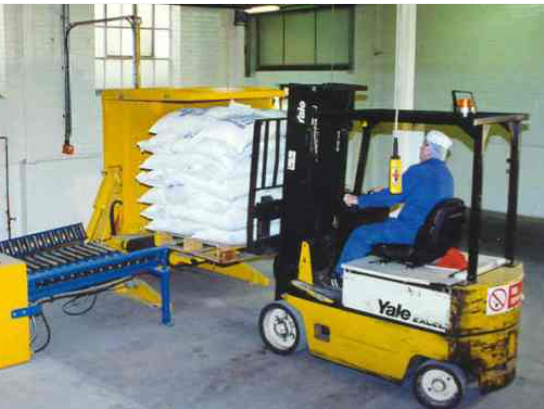
Dive Deeper: The Numbers Behind the Return
When I founded my own factory, I had to become an expert in ROI. Every machine had to justify its existence on the balance sheet. Let's break down how a pallet changer does exactly that, using the kind of practical analysis someone like Javier would appreciate.
Quantifying the Savings
The ROI isn't just a vague promise; it's something you can calculate.
-
Labor Costs: This is the most obvious saving. Imagine a manual process requires two workers and takes 15 minutes to swap a pallet safely. A pallet changer allows one worker to do the same job in 2 minutes. Let's do some simple math. If you swap 20 pallets per shift, the manual process takes 300 worker-minutes (5 hours). The automated process takes 40 worker-minutes. You've just saved over 4 hours of labor on a single shift. Over a year, this adds up to thousands of dollars saved on labor that can be reallocated to more valuable tasks.
-
Product Damage: Manual handling, especially of heavy or awkward loads, inevitably leads to mistakes. A dropped pallet, a punctured box, or a crushed corner can render a product unsellable. Let's be conservative and say manual handling results in a 1% damage rate. For a load worth $5,000, that's a $50 loss. An automated pallet changer is gentle and precise, reducing the damage rate to near zero (<0.1%). If you ship hundreds of pallets a week, preventing this damage translates into a huge direct saving.
-
Pallet Costs: This is a massive, often overlooked, area of ROI. A durable, high-quality wooden or plastic pallet suitable for an internal automated warehouse might cost $30, $50, or even more. You do not want to ship that pallet out and never see it again. A one-way recycled or presswood pallet might only cost $8. By using a pallet changer to swap to the cheap pallet right before shipping, you save over $20 on every single shipment. If you ship 10,000 pallets a year, that's a $200,000 saving in your pallet budget alone.
Let's put it in a simple table.
| Cost Center | Manual Process (Annual Cost Estimate) | With Pallet Changer (Annual Cost) | Annual Savings |
|---|---|---|---|
| Labor | 2 workers, 15 min/pallet | 1 worker, 2 min/pallet | $30,000+ |
| Product Damage | 1% of value of goods handled | <0.1% of value of goods handled | $50,000+ |
| Pallet Fleet | High cost of lost premium pallets | Low cost of one-way pallets | $200,000+ |
| Total Savings | $280,000+ |
These are just estimates, but they show how quickly the investment pays for itself. This doesn't even include the "intangible" returns, like reduced worker injury claims (which carry huge hidden costs) and the ability to handle demand surges without hiring temporary labor. For a leader focused on reducing operating costs by 8% like Javier, this is a clear and actionable strategy.
Beyond the Machine: What Truly Makes a Pallet Swapping System Successful?
You can research and buy the most technologically advanced, highest-rated pallet changer on the market. But if you just drop it onto your factory floor without a plan, it can quickly become an expensive, isolated island of automation. Instead of streamlining your operation, it can become a bottleneck that frustrates your team. A poorly planned installation can disrupt your existing workflow, create unforeseen new problems, and ultimately fail to deliver the ROI you were promised. You might end up with a powerful machine that your operators avoid using because it's inconvenient, leaving you with the same old inefficient manual process you wanted to solve.
A pallet swapping system becomes truly successful when it is viewed not as a single machine, but as an integral part of your entire material handling workflow. Success hinges on a holistic approach that includes careful analysis of the material flow, seamless integration with upstream and downstream processes, comprehensive operator training, and a proactive maintenance plan developed in partnership with your supplier.
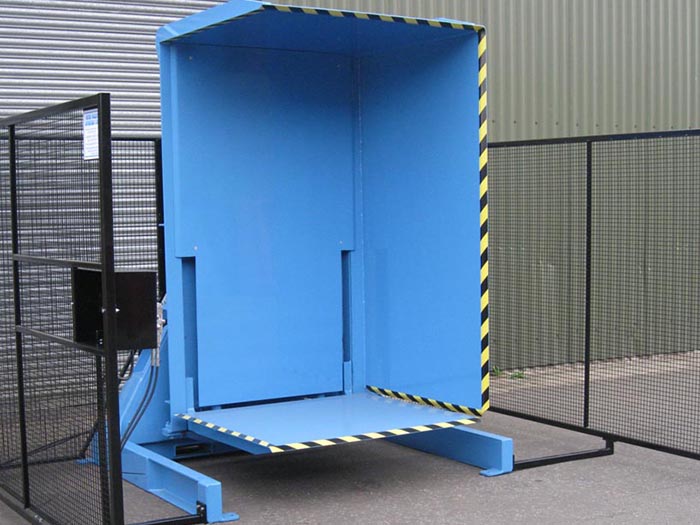
Dive Deeper: My Perspective as a Builder and Owner
This is the most important lesson I've learned in my career, and it's the core philosophy I used to build SHJLPACK. When I started as an engineer, I was obsessed with the machine itself—the cycle times, the motor specs, the clamping force. But after I established my own factory and worked with hundreds of clients, I realized the machine is only one piece of the puzzle. The best machine in the world is useless if the process around it is broken.
It's About Flow, Not Just the Swap
True efficiency comes from optimizing the entire flow of materials. Before we even talk about a specific machine model, we need to ask bigger questions:
- Upstream: Where are the full pallets coming from? Are they brought by forklift, or can they arrive on a conveyor?
- The Swap Zone: Where will the machine be located? Is there enough space for a forklift to maneuver easily? Where will you stage the empty outbound pallets (like recycled cartons) and where will you stack the valuable in-house pallets that have been removed?
- Downstream: Where does the load go after the swap? Directly onto a truck, or to a stretch wrapping station? Can we integrate the pallet changer with a wrapper to create a fully automated end-of-line system?
Thinking through this entire sequence is what separates a successful installation from a failed one. It's about designing a system that makes the operator's job easier, not harder. This level of process thinking aligns directly with goals like increasing equipment uptime and improving overall plant efficiency.
The Supplier as a Strategic Partner
This brings me to my final point. As a business owner like Javier, who has built an entire steel plant, you understand the difference between a simple vendor and a true partner. A vendor sells you a product. A partner invests in your success. This is what we strive to be at SHJLPACK.
A transactional supplier will send you a catalog and a price list. A strategic partner will come to your facility. They will walk your floor, watch your current process, and ask questions about your challenges and goals. They will help you design the optimal layout and workflow. They will oversee the installation and commissioning to ensure it integrates perfectly. And their support won't end there. They will provide in-depth training for your operators and maintenance team and work with you to create a proactive maintenance plan that fits your production schedule.
| Aspect | Transactional Supplier View | Strategic Partner View |
|---|---|---|
| Goal | Sell a machine. | Solve a logistics and efficiency problem. |
| Process | Send a quote based on a request. | Conduct an on-site analysis of your unique workflow. |
| Installation | Drop-ship the equipment for you to install. | Manage the installation, integration, and full commissioning. |
| Support | Provide a user manual. | Offer comprehensive training and a long-term maintenance plan. |
| Relationship | A one-time sale. | A long-term commitment to your operational success. |
Ultimately, the success of a pallet changing system depends on this partnership. You need a supplier who has been in the trenches, who understands the pressures of running a factory, and who is dedicated to providing a total solution, not just a box of metal.
Conclusion
A pallet changer is more than a machine; it's a strategic tool for boosting efficiency, safety, and profitability in your warehouse operations, especially when supported by a true partner.


